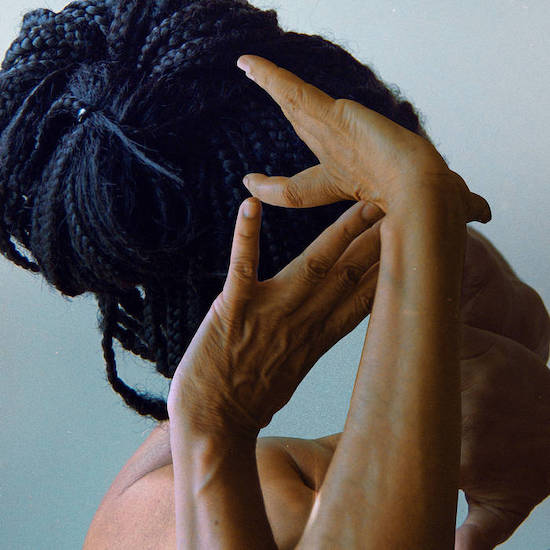A pioneer of fusion in Brazil, Juçara Marçal is known in Europe as a solo artist and a member of the experimental trio Metá Metá. Whether with the band or on her own, Marçal has been pushing the boundaries of traditional music, creating a kaleidoscopic sound where folk and devotional chanting are given a futuristic interpretation.
While these joyous and somewhat eccentric songs might sound alien, they match a trend in
contemporary music. Adventurous, genre-bending and free-form, Juçara Marçal’s compositions come from a world similar to that of London-based Japanese artist Yama Warashi and Estonian producer Maarja Nuut.
The new EP follows Marçal’s third boldly eclectic album Delta Estácio Blue. Just like its predecessor, EPDEB was produced by Kiko Dinucci, a composer and long-term musical partner of Marçal’s. Despite a shared eclecticism and personnel, it reveals different facets of the Brazilian experimentalist. The four-track record is more straightforward and stripped-down, bringing more traditional components to the front. Polyrhythmic and melody-led compositions allude to the music of the Brazilian region, Bahia, the centre of African diasporic religion Candomblé.
It’s impossible to ignore the spiritual element of this music. Stream-like bass-driven ‘Um-Choro’ unveils the meaning of the lyrics sung in Portuguese: “The wave was me, the wave is me, I who will always be a wave”. With its shamanic rhythm and the spectral sound of strings, the song conjures up forces of nature. Featuring a recurrent bass riff, it sounds hypnotic and triggers an ecstatic feeling.
Although the record refers to spiritual music of a particular region, there are musical elements that evoke other places and cultures. The gentle marimba in the finale of ‘Odunbiode’ brings up Nordic vibes, particularly, Icelandic music (and, more specifically, the track ‘Sé Lest’ by Sigur Rós). A composition with an enigmatic name ‘Criei Um Pe de Ipe’ features instruments that sound like darbuka and oud and, conjuring up Arabic countries. With a more transparent link to the local culture, ‘Nao-Reparem’ balances bossa-nova rhythms with subtle electronica.
The melodies and vocals are seemingly hard to tame. They demand context and rich texture which are provided by the collaboration of multi-instrumentalists. Marçal’s voice is both of a storyteller and enchanter. It is intricately framed with a multitude of exotic, seemingly otherwordly, sounds. Polyrhythmic ‘Odumbiodé’ features glass marimba, guitar and bow, tube drums, angelim marimba, pipe flutes and trilobita (a cluster of tuned PVC tubes topped with a drumhead).
Although the EP sounds less eclectic than the previous album, the music has an undeniable enchanting quality. It is less direct and more introspective, revealing another facet of this versatile artist.


